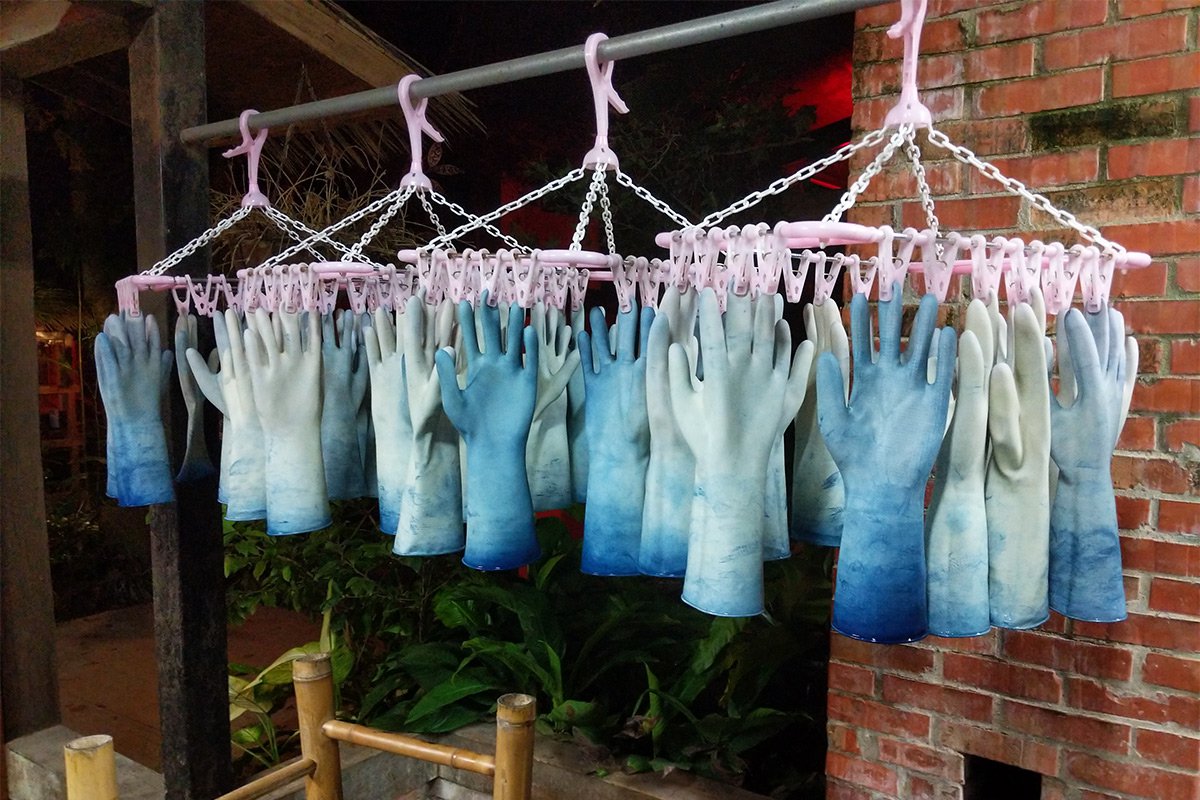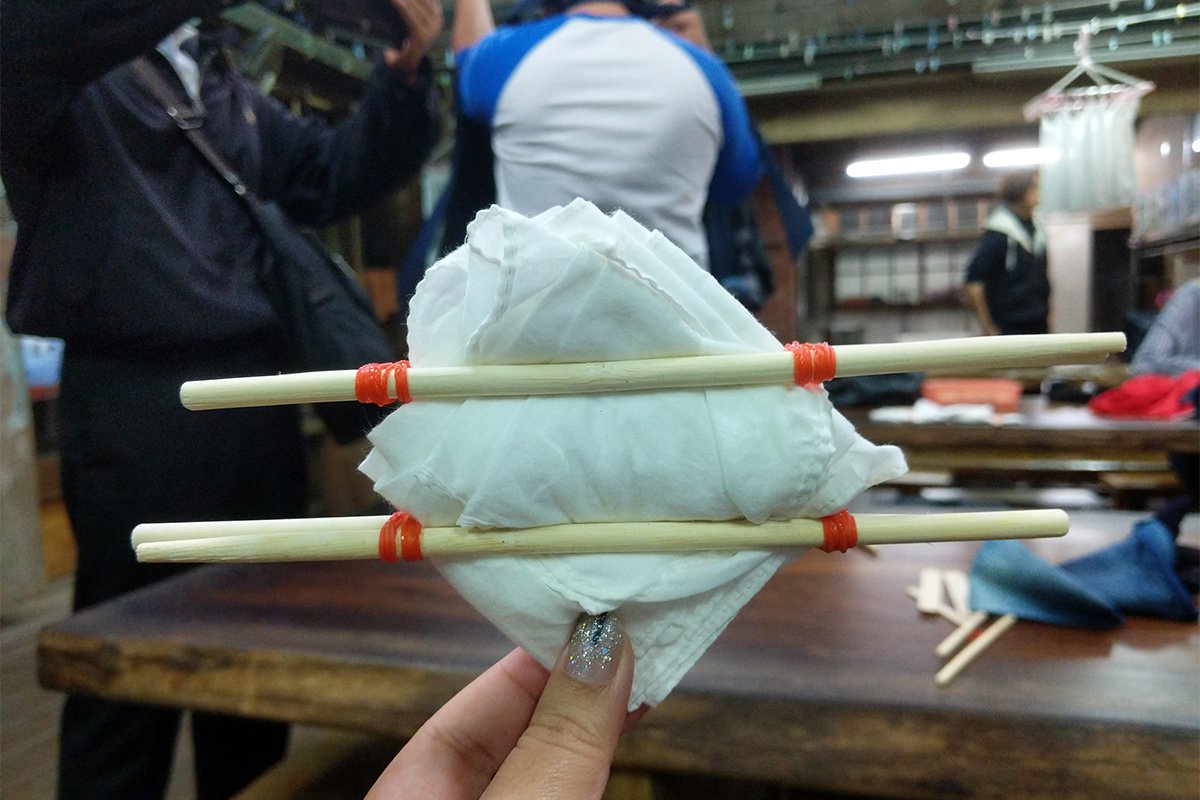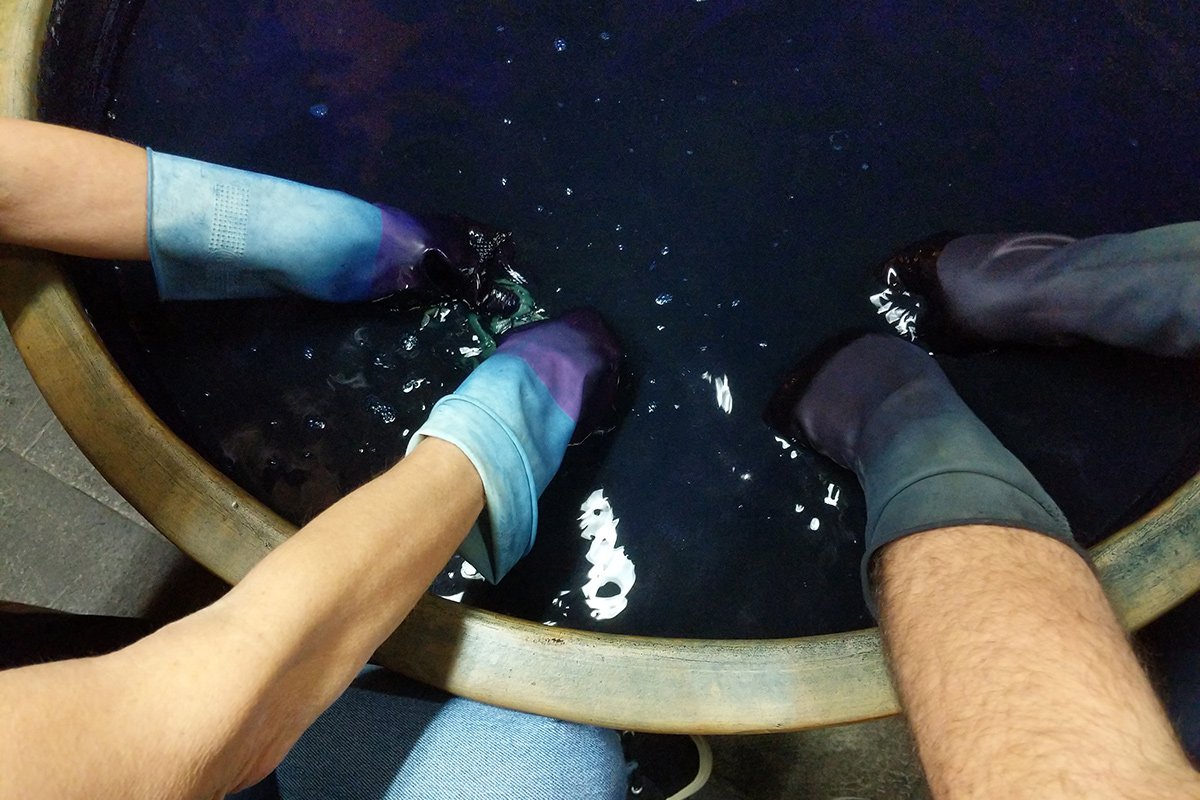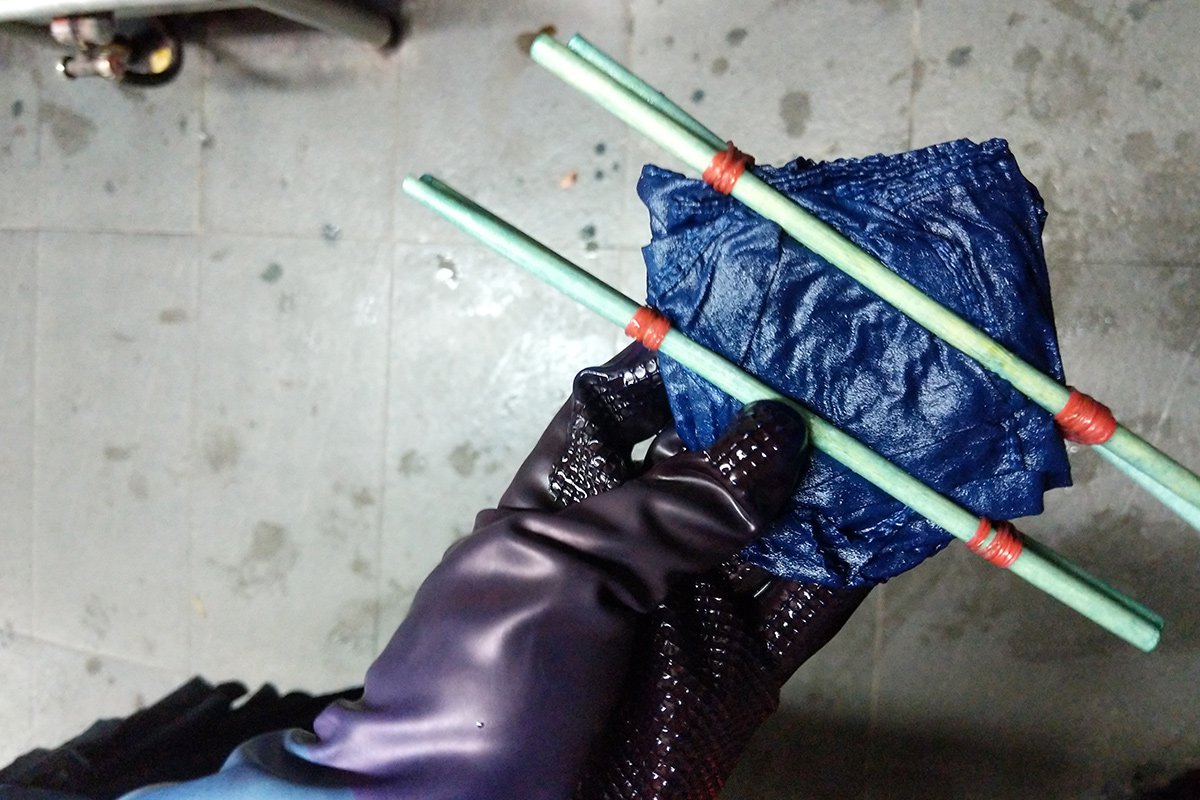Sparking Joy at an Indigo Dying Workshop in Taiwan
 All photos by Becky Cheang.
All photos by Becky Cheang.
You're in an old house in the mountain learning how to dye your own indigo textiles. Plot twist: You're in Taiwan, not Japan. Turns out the country has a rich history of the craft, and it's no less joy-inducing.
SANYI TOWNSHIP, Taiwan – Remember those tie-dye shirts we all made in third grade? Yes, that shirt, the one you probably just KonMari-ed out of your closet/life last weekend.
Bad news for all you recovering clutterers: Indigo dying is a chic, grown-up version of that tie-dye process. And it will make you want to fill your home with new textiles.
Most people relate indigo dying to Japan, probably due to the gorgeous deep blue found in many Japanese textiles. But there’s a deep history of the craft in Taiwan as well. Indigo pigment is created from harvesting and then fermenting a plant — the Assam Indigo (Strobilanthes cusia) is the most common variety — that grows best in humid mountain climates. (Taiwan is basically one long, humid mountainous island.)


On a recent trip to Taiwan, I was stoked to participate in an indigo dying workshop at Zhuo Ye Cottage (卓也小屋), located in a quaint hilly village of Shuangtan just two hours south of Taipei. Besides offering regular workshops, the indigo dying studio has a family-run homestay, vegetarian restaurant, and shop on site.
One rainy evening, some twenty of us piled into a room lined with long wooden tables. Each table group was supplied with a tray of tie-dying materials: rubber bands, disposable chopsticks and popsicle sticks of varying widths, and a large white square cloth for each participant.
After a brief presentation on the tedious but all-natural indigo-making process, our instructors demonstrated techniques to tie, fold, and secure our cloth to achieve different shapes. Some of us got a little Type A about perfecting our knots and folds in order to get our desired pattern. I had my own agonizing moments of indecision about which pattern to commit to.



Once we were happy with our folded cloth, it was time to dye. We donned navy blue aprons and rubber gloves and were directed to the other side of the studio. The strong fermentation smell hit us immediately — three giant vats were filled with the dye.
The dying process was pretty straightforward:
- Submerge cloth in water until it is completely soaked through.
- Dip cloth into one of the vats and massage cloth for two minutes in order for the dye to really get into the fabric.
- Rinse cloth under running water to speed up the oxidation process, which is when the dye turns from a deep green to a dark blue.
- Repeat the dunk, massage, and rinse steps once more.
After one last quick spin dry in the washing machine, we were done.
It was time for the grand reveal! Delighted exclamations and giggles filled the room as each person removed the sticks and rubber bands securing their cloth to reveal their finished tie-dye pattern. For that moment, we were all in third grade again.

Plan Your Trip
Drive two hours south from Taipei, or take a train or bus to Sanyi Station and grab a fifteen-minute cab from there.
Keep Exploring Taiwan
10 Steps to a Perfect Day in Taipei
Tucking into Taiwan: Ultimate Food Tour
Exploring Taipei's Neighborhoods
